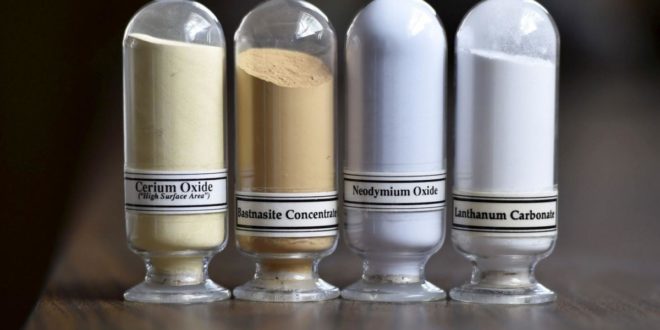By Shehab Al Makahleh
The United States and China are neck-to-neck in their trade war; many countries are going to be enmeshed in the two powers’ commercial conflict, regardless of any consequences or ramifications on world economy. The question is: What is the real reason for this war?
The real American Chinese war trade which we all witness at present has nothing to do with the huge investments by China in the US market or the colossal exports to US, but rather by two prospects which will determine the future and nature of superpower nations. These two are: Artificial Intelligence (AI) and the rare earth metals which are used by some countries including China as a weapon or a tool.
Since 1990s, China has a throttlehold on rare earth metals and supplies which have become a tool to twist arms of other nations since these deposits are used for hi-tech and AI industries, the backbone of American dominion over the world.
Accordingly, China has become the foremost vigor in the rare earth market in the 1990s, beating the U.S. The United States Geological Survey revealed that China has the most important 17 rare ores that are used in every important sector starting from electronics to national defense industries. The hardware and industries of most of American technologies depends on these ores.
China has almost 81 per cent of global rare earth supplies, and it produces more than 125,000 metric tonnes of rare earth minerals annually. The second in rank is Australia, which produces almost 20,000 metric tonnes per year. Experts believe that China is the Mecca of rare ores for many years to come. These deposits are an ace in the Chinese government’s hand that can be used in trade war with the US and with other countries. So far, China has not resorted to this battle, but countries would resort to both economic and political wars when needed.
Weaponizing rare earth metals should be addressed at the highest international levels through the United Nations and other world organization in order ward off any clash between the superpowers because who has these sources will shape the future of the world. This explains why China is advancing in the field of artificial intelligence and in telecommunications which has enabled the Chinese companies to win G5 construction contracts in the West.
Since china produces more than 125,000 tonnes of rare ores, Beijing can reduce the cap under pretext that the country is working on saving the environment and decreasing pollution. The reduced quota would restrict supplies of rare ores, increase production costs and prices and badly affect world markets as the prices of related items will hike accordingly. For example, statistics reveal that the US imports more than 75 per cent of its rare earth ores from China which are used in telecommunication technologies, computers, cell phones, defense industries and planes. Any rise in prices of exported rare metals from China which are used in smartphones will result in increasing prices of production; thus, consumers will feel the gap in prices before and after.
The second issue that would face American industries depending on imported Chinese rare ores stems from restrictions of finished exported Chinese elements. In the war trade between both countries, the US and China are both resorting to indirect measures without resorting to direct processes.
Just a simple look at personal electronics such as smartphones, gadgets television sets, hair dryers, electric and hybrid vehicles, we find lots of rare ore materials used in this production. Lanthanum and cerium are used to make the screens and to polish them; neodymium and praseodymium are used to make magnets of batteries. Such minerals are from China and until now there are no alternative sources. If war spirals out of control between Washington and Beijing because the Chinese would cut off these deposits from the global supply chain as their country is the major provider of 17 mundane crucial rare ores and materials badly needed in today’s world industries, production cycle in the world would be affected.
The rift right now is on some of these humdrum materials, amongst which are arsenic metals used in semiconductors; cadmium, used in rechargeable batteries; and tungsten, used in light bulbs and heating devices. Since it is very hard to spend a day without using rare earth metals, it will be very difficult to witness a real war between both countries as each of them complement each other.
Rare earth ores which refer to 17 elements have very good magnetic and electrochemical properties which make them the best metals to use in modern hi-tech industries, giving China which produces more than 81 per cent of world rare ores the upper hand to control the world in the coming decades. Therefore, there is a dire need to have an international umbrella to hold meetings similar to that of OPEC to streamline production of these rare metals to the world market without weaponizing or politicizing them.
 Geostrategic Media Political Commentary, Analysis, Security, Defense
Geostrategic Media Political Commentary, Analysis, Security, Defense





